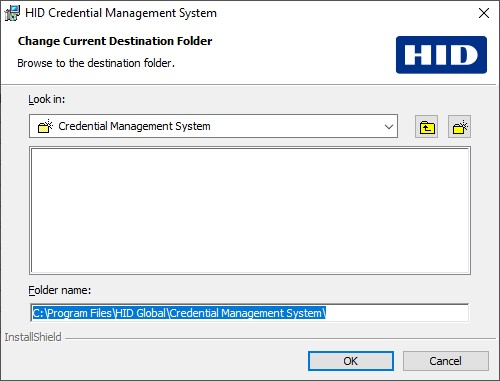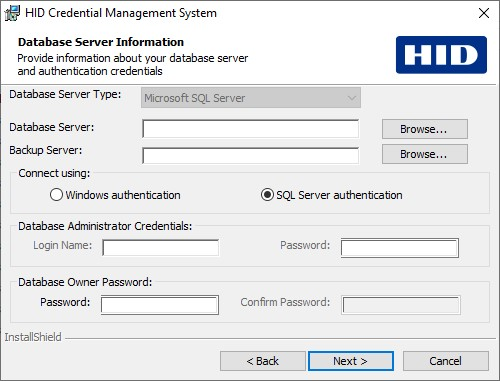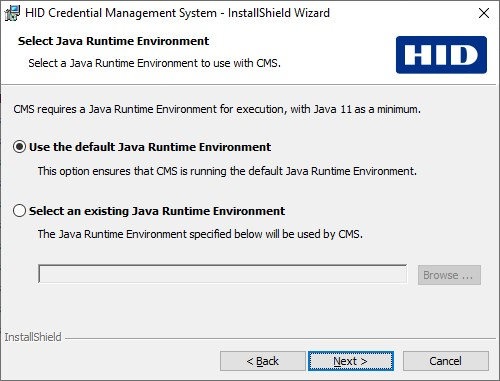Custom Installation
This section describes how to customize the ActivID CMS installation (that is, how to install the server components only). You will choose to install server components only when you wish to install the ActivID CMS databases manually (using the database scripts), or when you install a peer server.
Install the Server Components Only
You have completed all prerequisites in the Installation Prerequisites section.
You have completed the installation of the ActivID CMS databases.
This can be achieved either by performing a previous full installation of ActivID CMS (if you plan to install a peer server), or by manual installation using database scripts. For detailed information about database scripts, refer to the release-note.txt file in the DB Scripts folder of the ActivID CMS installation package.
-
Complete step 2 through step 5 in the Install ActivID CMS and Its Databases section.
-
On the Setup Type page, select Custom.

-
Click Next. The Custom Setup page appears.
-
In the feature list, click CMS Databases, and then click This feature will not be available.

-
If you want to change the installation directory, click Change.
The Change Current Destination Folder dialog field appears:

-
Browse and locate the folder, and then click OK.
-
Select Use the default Java Runtime Environment, and then click Next.
This option automatically installs the default Java Runtime Environment (JRE) provided with the ActivID CMS set-up. If you prefer to use a JRE that is already installed on the machine, choose Select an existing Java Runtime Environment and indicate the path to the home directory of the JRE to be used.
Important: It is not possible to change the JRE subsequently if the Use the default Java Runtime Environment option is chosen during ActivID CMS installation.Note:If you choose not to use the default JRE, you must make sure that the JRE selected using the Select an existing Java Runtime Environment option meets the minimum requirements for ActivID CMS.
JRE 11 is the minimum requirement for ActivID CMS 5.3 and higher.
JRE 17 is the most recent version currently supported for ActivID CMS.
You can also customize the JRE after installation using the CMS_JAVA_HOME environment variable, but only if the Select an existing Java Runtime Environment option was used during ActivID CMS installation.
-
Click Next.
The Database Server Information page appears:

-
Complete step 8 through step 32 in the Install ActivID CMS and Its Databases section to finish the installation of the ActivID CMS server.
If you are configuring your database in SQL Server authentication, the confirmation field for the Database Owner password is unavailable. This results from the fact that you are only installing CMS, using a database that is already installed, so CMS is prompting you to provide the database location and access information.
The Select Java Runtime Environment page appears:






